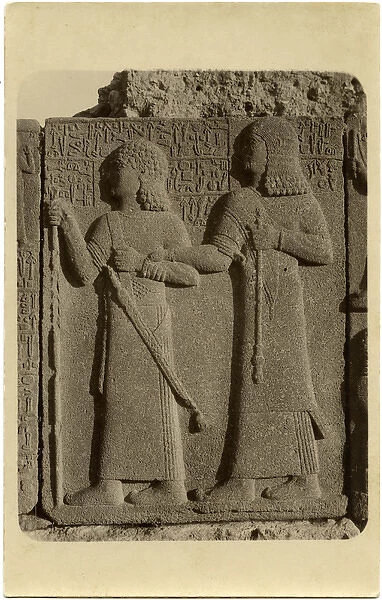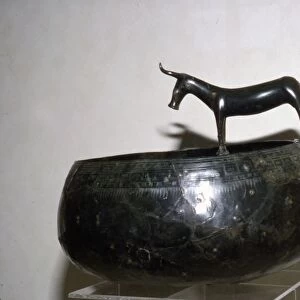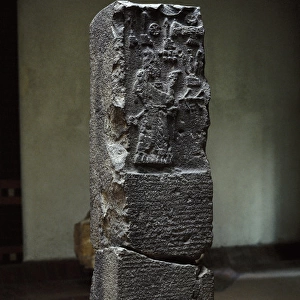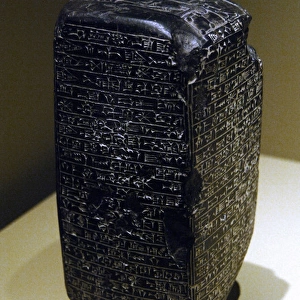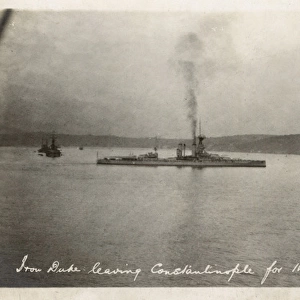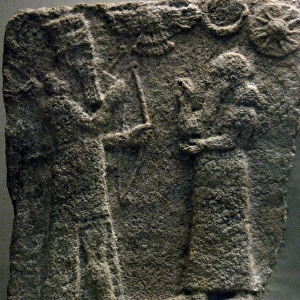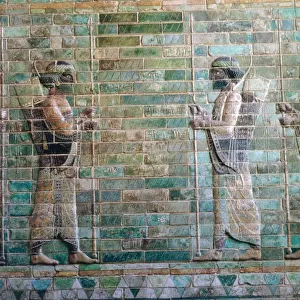Home > Asia > Syria > Related Images
Hittite stone relief at Carchemish, Turkey
![]()

Wall Art and Photo Gifts from Mary Evans Picture Library
Hittite stone relief at Carchemish, Turkey
A Hittite stone relief discovered at the Carchemish (Karkemish) - an important ancient capital at times independent but also having been part of the Mitanni, Hittite and Neo Assyrian Empires, now on the frontier between Turkey and Syria. The figures pictured are Kamani (l.) - ruled circa 790 BC and Yariri (r.) - Regent, ruled c.815BC - successive rulers of Carchemish. Date: circa 1910s
Mary Evans Picture Library makes available wonderful images created for people to enjoy over the centuries
Media ID 14363783
© Mary Evans / Grenville Collins Postcard Collection
Caricatures Cartouches Carving Dec15 Hittite Kings Neo Assyrian Regent Rulers Syrian Carchemish Karkemish
FEATURES IN THESE COLLECTIONS
> Asia
> Syria
> Related Images
> Asia
> Turkey
> Related Images
EDITORS COMMENTS
1. Title: "Reigns of Kings Kamani and Yariri: A Hittite Stone Relief from Carchemish, Turkey" This Hittite stone relief, discovered at the ancient site of Carchemish in modern-day Turkey, showcases the regal figures of two successive rulers: Kamani on the left and Yariri on the right. Carchemish, an essential ancient capital, held significance as an independent city-state at various points in history, as well as a part of the Mitanni, Hittite, and Neo-Assyrian Empires. The site now lies on the border between Turkey and Syria. The intricately carved relief dates back to the 9th and 8th centuries BC. Kamani, the first figure depicted, ruled Carchemish around 790 BC. His regal attire, complete with a crown and scepter, is evident in the relief, emphasizing his royal status. The second figure, Yariri, served as regent around 815 BC. His cartouche, an ancient form of writing, is visible above his head, inscribed with his name and titles. The relief's details, such as the hieroglyphic inscriptions and the caricatured faces of the attendants, provide valuable insights into the artistic and historical aspects of the Hittite civilization. The relief's discovery at Carchemish, an essential archaeological site, highlights the rich history of the region, which has seen the rise and fall of various empires, including the Mitanni, Hittite, and Neo-Assyrian Empires. The relief's preservation and study continue to contribute to our understanding of the ancient world and the complex political dynamics of the region.
MADE IN AUSTRALIA
Safe Shipping with 30 Day Money Back Guarantee
FREE PERSONALISATION*
We are proud to offer a range of customisation features including Personalised Captions, Color Filters and Picture Zoom Tools
SECURE PAYMENTS
We happily accept a wide range of payment options so you can pay for the things you need in the way that is most convenient for you
* Options may vary by product and licensing agreement. Zoomed Pictures can be adjusted in the Cart.

